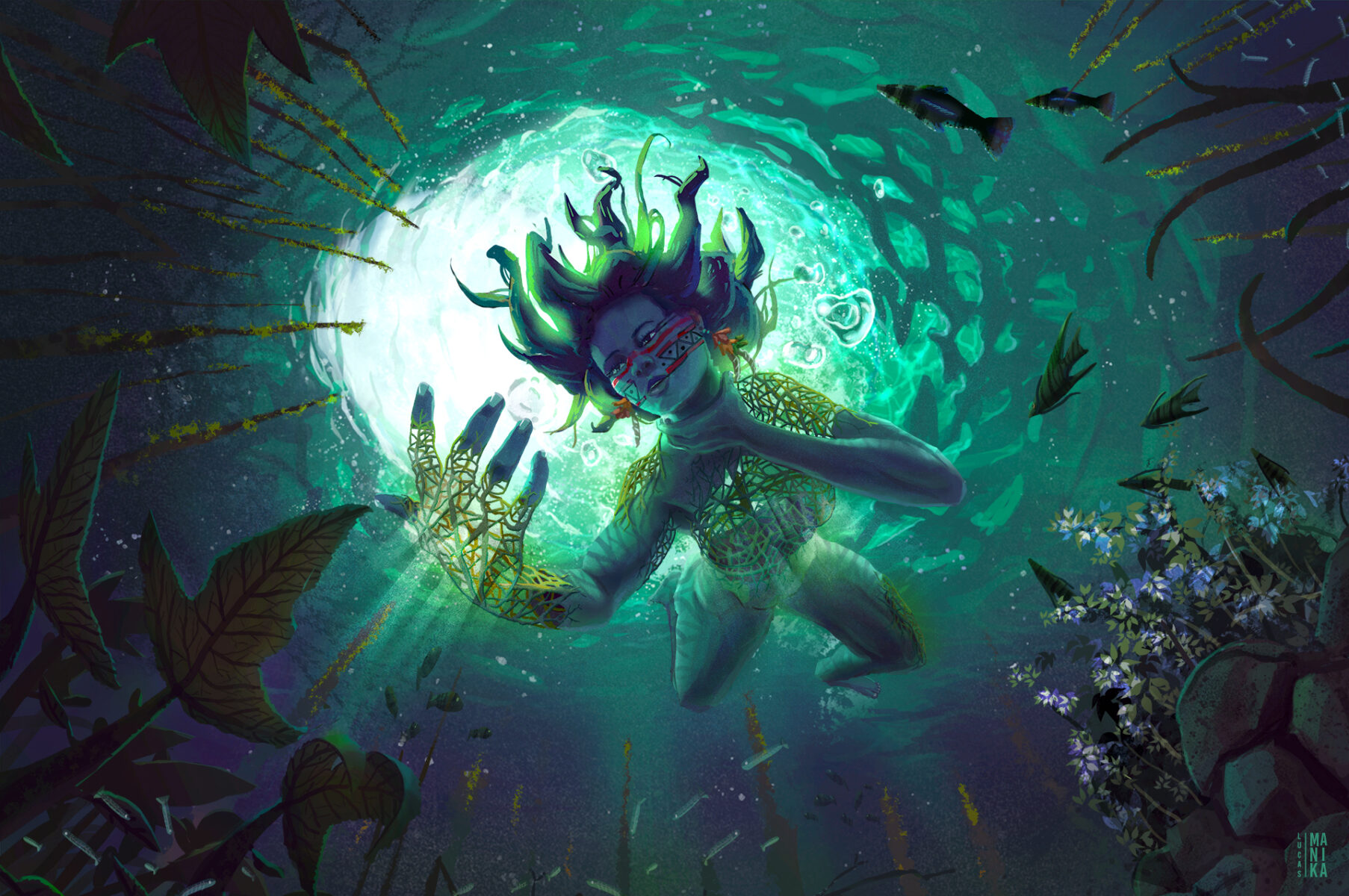Brazilian folklore is a great representation of the country’s diversity. influenced by Native, African, and European cultures; represented in dance, food, and language, the histories and traditions are passed on through generations and carry a rich baggage of knowledge.
You might think 500-year-old stories now live exclusively in history books, revisited only by students writing essays for literature classes. However, Brazilian folklore remains a part of the childhood of many generations of Brazilian kids (myself included). Those same characters who first appeared in pre-colonial times. How did they stay relevant and relatable through periods of massive social and cultural change?
The first point to consider is the nature of these iconic and beloved characters, usually half human and half animal, who use magic to protect the forest. They defy the heroic archetype, instead described as cunning, sneaky, agile, and mischievous. The irreverence with which their stories are told has never lost its relevance. Furthermore, the perpetual rewriting of these stories in new contexts ensures the relevance of these characters. Ultimately, the media’s tenacity in rewriting these beloved creatures into new stories itself is proof of the enduring importance of the message they spread, and how esteemed their message and values are to Brazilians.
he morals present in these stories, and the lessons they teach, are strongly tied to the cultural values of Brazilians. Portrayed as a witch trapped in the body of a crocodile, the Cuca was my biggest fear as a child: “be careful with the Cuca because she will catch you wherever you are.” Mentioned in one of the most popular lullaby songs, this folkloric figure is known for kidnapping kids who don’t obey their parents; her story is told to children by parents as a threat. Her origins trace back to the Iberian Peninsula, and were likely brought to Brazil by Portuguese and Spanish immigrants. This questionable pedagogical approach of inflicting fear on kids is considered very normal in Brazil and is likely to be related to religious beliefs.
The copious amounts of mass media adaptations have also gone a long way in ensuring the ongoing success of these stories. From cartoons, series, movies, and soap operas, folkloric characters have never left the screens of Brazilian households. These adaptations keep the stories coherent in contemporary times, preventing them from aging into closed books full of dated language in a library. Contemporary adaptations include the book and television series Sítio do Pica-Pau Amarelo. The series, a part of my childhood, tells the story of two cousins and the imaginary world they create on their grandma’s farm. The folkloric characters depicted include “Saci,” described as a mischievous boy who lost one of his legs while fighting capoeira, a type of martial arts that combines elements of dance and music historically played among slaves, and the magic red bunny he uses to prank people. He is known for braiding horses’ hair, and creating a huge mess wherever he goes.
Another recent retelling of Brazilian folklore is the Netflix Series Invisible City. Depicted in this series is the “Curupira”, a boy with flames in his hair and feet that face backward, which he uses to confuse people that enter the rainforest with evil intentions.
Multiple adaptations, a lot of screen time, and cultural relevance were the secret formula that prevented Brazilian folklore from becoming obsolete. Despite this folklore’s success until now, the age of globalised mass media adds another obstacle to the survival of these stories for another 500 years. It is not controversial to state that easy access to international content, only intensified by smartphones and social media, has affected local cultures across the world. The media we consume today embodies the “global” culture produced in Hollywood; it relates more to American lives and ideas than the original story-telling and cultural extracts that we were used to seeing in homegrown movies and on TV. Only time will tell what will become of many stories and traditions, not comprehensible on a sixty second tik-tok scroll. Or are they?





